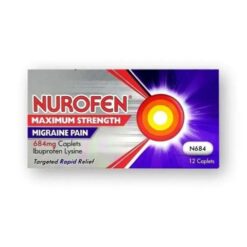What Is A Migraine?
Migraines are intense headaches often accompanied by other symptoms such as nausea, sensitivity to light and sound, and sometimes visual disturbances known as auras. Unlike typical headaches, migraines can significantly impact your daily life.
What Causes Migraines?
While the exact cause of migraines remains unclear, they’re thought to result from abnormal brain activity affecting nerve signals, chemicals, and blood vessels in the brain. Triggers can vary widely, including:
- Emotional factors: Migraines can occur if you’re feeling under pressure or in a low mood.
- Hormonal fluctuations: Migraines often occur in women during their menstrual cycle.
- Dietary factors: Migraines often occur due to insufficient hydration or excessive caffeine intake. Some people may find that certain foods, such as dairy products, can trigger migraines.
- Medications: Migraines can be caused by birth control pills, heart medications and pain relief medications.
- Physical causes: A lack of rest or not getting enough exercise can cause migraines.
What Are The Symptoms Of Migraines?
Migraine symptoms vary from mild to intense symptoms that may cause you to have to sit or lie down for several hours. They vary from person to person, but common symptoms can include:
- Throbbing pain on one side of the head,
- Nausea
- Vomiting
- Dizziness
- Light and sound sensitivity
- Visual disturbances
Some people experience warning signs, or auras, indicating that a migraine is about to begin.
Can Migraines Be Prevented?
Although there’s no cure for migraines, managing triggers and lifestyle changes can help reduce their frequency. Regular exercise, adequate hydration, consistent sleep patterns, and stress management can be effective, and a doctor or pharmacist may recommend preventive medications for some.
How Are Migraines Diagnosed?
Getting a migraine diagnosis involves a consultation with a doctor or specialist who will review your symptoms and medical history and conduct a physical examination. However, further tests may be done to rule out other causes in some cases.
Treatments For Migraines
When treating migraines, the goal is to relieve symptoms and prevent future attacks. The treatment choice depends on the frequency and severity of your migraines, how they affect your daily life, and any other health conditions you might have.
Over-The-Counter Migraine Pain Relief
For those experiencing mild to moderate migraine symptoms, over-the-counter pain relief treatments offer a convenient and effective solution. Some of these over-the-counter medications include:
- Nurofen Migraine Caplets are a popular choice containing ibuprofen, an anti-inflammatory drug that helps alleviate migraine pain by reducing inflammation.
- 4Head QuickStrips provide a cooling and soothing effect when applied to the forehead, offering relief from the discomfort of migraines.
- Migraleve Pink is effective for initial relief at the start of a migraine, addressing symptoms early on. However, for ongoing symptom management, Migraleve Yellow prevents the condition from worsening, offering extended relief.
- Tiger Balm is known for its natural ingredients and provides a soothing effect when applied to the temples and neck. Its unique ingredients can help ease the tension and pain associated with migraines.
Prescription Migraine Pain Relief
Prescription treatments for severe migraine symptoms are designed to provide specific relief and target the root causes of migraines. Common prescription medications include:
- Almotriptan tablets are taken at the beginning of a migraine. They’re not designed for preventive use but are effective in treating active migraine episodes.
- Imigran Nasal Spray contains sumatriptan, which can relieve migraine symptoms by narrowing blood vessels in the brain and is beneficial for people who experience nausea and vomiting during migraines.
Rizatriptan tablets or melts dissolve quickly in the mouth, offering fast relief by acting on serotonin receptors to reduce inflammation and constrict blood vessels.

























